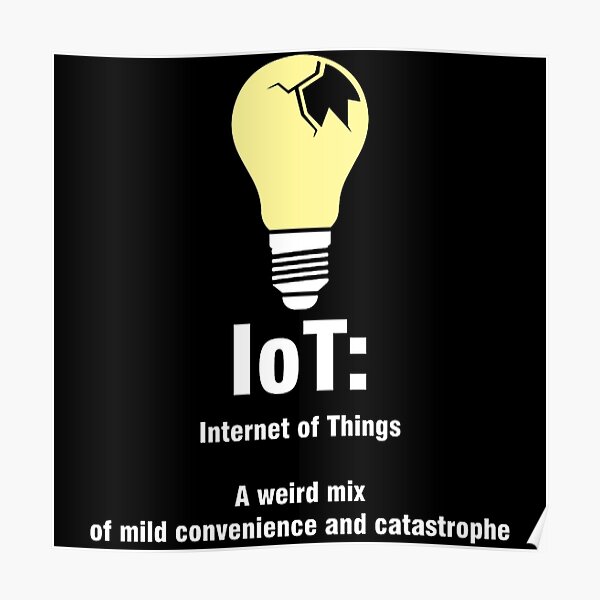What is IoT and How does it work?
Well, IoT is.....
Jokes apart... Here goes the actual definition...
The Internet of Things (IoT) is a
system of interrelated computing or mechanical devices, objects, people and
even animals that are provided with the ability to transfer data over a network
without requiring human interaction. A Thing can
be a person with heart monitor implant or
an automobile with in-built sensors that can be assigned with an Internet
Protocol address to transfer data over the network. Here the ‘Things’ are
represented as nodes on the massive network called the Internet. Over the past
two decades, IoT has gained significant momentum in facilitating human-to-human
and human-to-machine communication as it has the ability to access information
from anywhere at any time on any device alongside providing improved
communication between connected electronic devices. Although IoT shall become
one of the pillars of future technology, lets hope the future doesn’t end this
way.😂
Privacy and protection in IoT and why it is important:
Well, certainly not like this. 👀
But before actually going into the 'How' part, lets look into the 'Why' part. IoT is starting to become mainstream with companies like Google, IBM, Intel and other leading revolutionary organizations. Essentially it is the backbone of the Internet. We have already seen that IoT devices are interconnected, which means that, if a hacker is able to hack one object, then the whole system is under threat. This is why security in IoT is of much importance.
Here are 5 general precautions to protect IoT devices from threats:
- Never assume that an IoT device is incapable of being hacked
- Use a different password for each device/service and never stick with the default password.
- Keep your connected devices up to date with the latest firmware and software.
- Turn off WiFi or Bluetooth if or when the connectivity features are not needed.
- Put IoT devices on their own network separate from your most important systems. You can go one step further and group devices to have more than one IoT device network based on a security profile.
Although the above precautions are helpful in some way, we need another approach where security is in-built from the beginning as there is a myriad of Internet-connected devices vulnerable to remote hacking. The ultimate solution is Security by design. This approach is efficient as it is easier if we stop something from happening rather than repairing the damage that has been done.








0 Comments